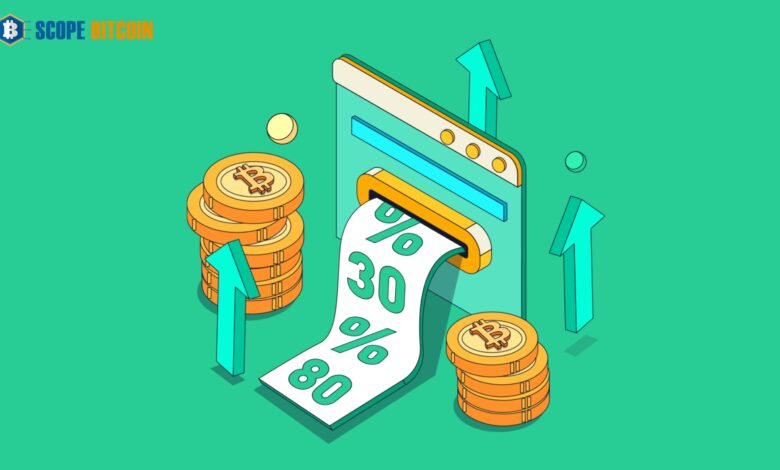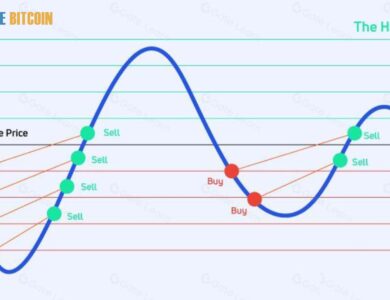
APY in Crypto A Comprehenshive Guide 2025
Many concepts used in the crypto business have their roots in traditional finance. It is already difficult to grasp how to make smart moves in the cryptocurrency market without being conversant with these conventional financial concepts. Suppose you’re new to the crypto industry or have dealt with prominent exchanges like Binance, which pays interest for staking crypto. In that case, you may have queries like these regarding conventional financial concepts. This article will walk you through the terminology above, clarifying them so you can use them confidently in future interactions.
What is APY in Crypto?
The Annual Percentage Yield (APY) represents an investor’s potential return on cryptocurrency assets over one year, including compound interest. Compounding interest is how interest on an investment can build up over time.
The term “compounding interest” refers to reinvesting interest earnings to generate even more interest in the future. The long-term returns are substantially higher since this interest type is computed on the principal amount (the initial investment) and the accrued interest. If you compare compounding interest to simple interest, which calculates interest on the initial deposit amount, you’ll see some significant differences.
An essential measure for Bitcoin savings programs, APY (Annual Percentage Yield) functions similarly to traditional savings arrangements despite its association with conventional accounts. Earning annual percentage yield (APY) in cryptocurrency can be done in several ways:
- Staking: This involves locking up your cryptocurrency in a particular account to support the network of a blockchain project. In return, you are rewarded with a portion of the transaction fees generated by the network.
- Decentralized Finance (DeFi) Protocols: These protocols offer various financial services, such as lending and borrowing, that allow you to earn interest on your cryptocurrency.
- Cryptocurrency Exchanges: Some exchanges offer interest-bearing accounts where you can deposit your cryptocurrency and earn APY.
How Does APY Work in Crypto?
Take an example to see how annual percentage yield (APY) works. Imagine you put $100 into cryptocurrency savings accounts that offer a 5% annual percentage yield (APY) and compound quarterly. At the end of the year, you would have $105.09 in your pocket. Alternatively, if only essential interest were deducted, the remaining amount would be $105 today.
Due to quarterly compounding, this translates to an annual interest rate of 5.095% for the investment. Although this rate isn’t exceptionally high, it would increase the initial $100 to $121.99 after four years of quarterly compounding. The sum would have been $120 if compound interest had not been applied. Look at the computation formula below for a clearer picture.
How to Calculate APY in Crypto?
Other aspects must also be considered when determining cryptocurrency investments’ annual percentage yield (APY). Take inflation into account; your profits could quickly decline if the cryptocurrency you put your money into experiences inflation rates more significant than your annual percentage yield (APY).
Crypto APY might change depending on the demand and liquidity of a specific cryptocurrency. Therefore, it’s essential to keep an eye on supply and demand. The interest rate and the investment’s capacity to outpace external circumstances determine its success.
What is APR in Crypto?
The Annual Percentage Rate (APR) in cryptocurrency investments shows the expected return on investment (ROI) for investors who lend or make their cryptocurrency available for loans. Although APR considers any additional costs that borrowers may be required to pay, it does not account for compound interest, unlike APY. However, despite the exclusion of compounding, several platforms still provide competitive APR to entice users to stake their cryptocurrency assets.
Interest is calculated on an annual basis. Thus, it is prorated based on when an investment or loan is held. For example, an 8-month investment with a 5% APR would only return 3% of the initial investment. Exchanges mainly provide two loan types: fixed and flexible.
- Fixed lending resembles a bank Certificate of Deposit (CD) and requires users to lock their money for a specific period at a fixed interest rate, offering a higher return.
- Flexible lending operates similarly to a savings account, allowing users to withdraw their cryptocurrency at any time but with lower returns.
How Does APR Work in Crypto?
To understand APR and how it works, we will use an example similar to the one from the APY explanation. Suppose you invest $100 in a crypto savings account with an APR of 5% and an APY. With an APR of 5%, you would earn $5 in interest for the year. This would bring your total balance to $105. So, as you can see, an interest is directly proportional to the money you initially invested. For a better understanding, check the calculation formula below.
How to Calculate APR in Crypto?
The annual percentage rate (APR) considers investment interest rates and any extra expenses linked with lending or staking cryptocurrency. Lending platforms and exchanges often levy additional costs, such as transaction and platform usage fees.
In addition, APR hopes to entice investors by providing attractive returns or interest on bitcoin assets. Platforms frequently engage in price wars to attract consumers to their services by offering greater APR. The competitive rates attract investors and staking opportunities in the crypto ecosystem.
Simple Interest vs. Compound Interest
You have been taught about simple and compound interest until this point in the article. But don’t worry if you’re still confused; we’ll clear things up now and walk you through these two approaches to calculating your return on investment. When you pay simple interest, your initial investment remains unchanged, and any interest you’ve earned is ignored. As more interest is calculated, the fixed rate remains unchanged.
Compound interest is an evolving concept now. It considers not only the principal but also the interest you’ve accrued. The sum is increased with each interest payment, and the subsequent computation is based on this increased amount. Due to the compound effect, your money will grow quicker than with simple interest. Consider the frequency of interest additions while comparing investments. If interest payments occur daily or monthly, your investment may increase in value due to the increased frequency.
APY vs. APR: At-a-Glance Comparison
When planning to invest, it would be best to consider both annual percentage yield (APY) and cost of borrowing (COR), even though they are different. While annual percentage rates (APRs) help estimate yearly total interest and fee payments, they do not consider compound interest.

While annual percentage yield (APY) is essential, it typically does not account for costs because it includes compound interest. After deducting such expenses, your true ROI will become apparent. The true worth of your investment can be better understood by adding the APR and APY together.
Important Facts to Remember
There is some fuzziness between the terms Annual Percentage Yield (APY) and Annual Percentage Rate (APR) in DeFi. However, most DeFi systems rely on APY to highlight ROI. Variations in protocol demand and usage might cause APY figures to shift. An annual percentage yield (APY) is constant on some platforms.
Watch out for extremely high annual percentage yields (APYs), such as APY = +1200%. “Is this sustainable?” and “Is there a valid use case for this project?” are essential questions to ask to determine the reliability of these numbers.
APY vs. APR: Which is Better Related to Crypto Assets?
When investing in cryptocurrency, consider the annual percentage yield and the compounded monthly interest rate (APY and APR, respectively). They serve distinct functions and measure different things.
When is APY Better than APR?
For investments that compound often, annual percentage yield (APY) reflects the total return more accurately than the annual percentage rate (APR). This is because APY considers interest gained on the principal and interest earned in previous periods. As a result, the total return can grow substantially over time.
When is APR Better than APY?
Especially for long-term loans, APR reflects the actual cost of borrowing money more accurately than APY. This is because annual percentage rates (APR) take compound interest into account during the loan’s lifetime, which can cause the overall cost to skyrocket.
Which is Better for Crypto Investing?
Because crypto investments are long-term, annual percentage yield (APY) is a more appropriate measure for gauging prospective ROI than yearly percentage rate (APR).









